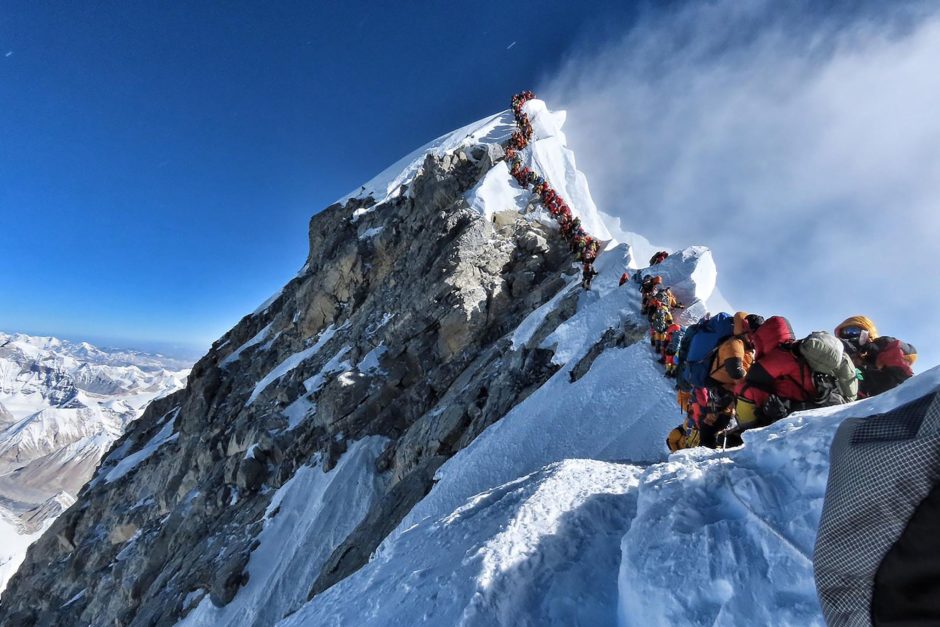or 13 years after it was found to be the highest mountain in the world, Peak XV had no European name.
In 1865, the then Surveyor General of India suggested that it be named after his predecessor, Sir George Everest (1790-1866), the man responsible for the Great Trigonometrical Survey, completed in 1841, which ultimately determined its height. Everest himself, though honoured, was privately unhappy, as it was official policy that mountains be given their local vernacular name. However, an exception was made and the name stuck. It is known as Sagarmatha in Nepal and Chomolungma in Tibet.
Early expeditions in the 1920s, including the mysterious disappearance of Mallory and Irvine in 1924, all attempted Everest from the Tibetan side as Nepal was closed to foreigners. It wasn’t climbed until Nepal opened its borders, and in 1953 Tenzing Norgay and Edmund Hillary finally stood on its summit as part of a British Expedition, led by Colonel John Hunt. The Swiss Expedition of the previous year had failed only a few hundred meters short of the summit.
Since then, Everest has been climbed many times and by many routes. The route taken by Hunt’s 1953 expedition is the ‘Ordinary Route’, disparagingly called the ‘Yak Route’ by Sherpas. Following his achievement on Annapurna’s Southern Face, Chris Bonnington led two expeditions to tackle Everest’s southwest face and succeeded in 1975. The Americans traversed it in 1963. In 1970, Yuichiro Muira tried to ski down the Lhotse Face from the South Col, but spent most of the time airborne and out of control, ending unconscious on the edge of a crevasse. Rheinhold Messner climbed without oxygen and then solo. In April 1988, two teams of Japanese climbers met on the top, having scaled the north and south faces. And there, to record the event, was a television crew.
Peter Hillary followed in his father’s footsteps and stood on the summit in 1990. Then, in April 1993, the team that first climbed Everest trekked to the Base Camp for a 40th-anniversary re-union: they found 1500 other climbers waiting their turn to climb
to the top of the world. These days, commercial climbs offer the opportunity for anyone with climbing knowledge (and a lot of cash) to climb the mountain. A record number of 633 ascents were recorded in 2007. In spring 2016 over 450 climbers made it to the
top, 209 of them on the same day. There were five deaths from altitude and frostbite.
 So much activity on the mountain does bring the risk of a major incident. In 1996 eight guides and clients died when caught high on the mountain in a storm after queues for the summit had delayed their ascents and, in 2014, 16 Sherpas were killed by an avalanche while establishing the route for their clients. In 2008 a helicopter ‘landed’ on the summit, placing its skid bar on the snow. How long until the ultimate day trip is possible?
So much activity on the mountain does bring the risk of a major incident. In 1996 eight guides and clients died when caught high on the mountain in a storm after queues for the summit had delayed their ascents and, in 2014, 16 Sherpas were killed by an avalanche while establishing the route for their clients. In 2008 a helicopter ‘landed’ on the summit, placing its skid bar on the snow. How long until the ultimate day trip is possible?
